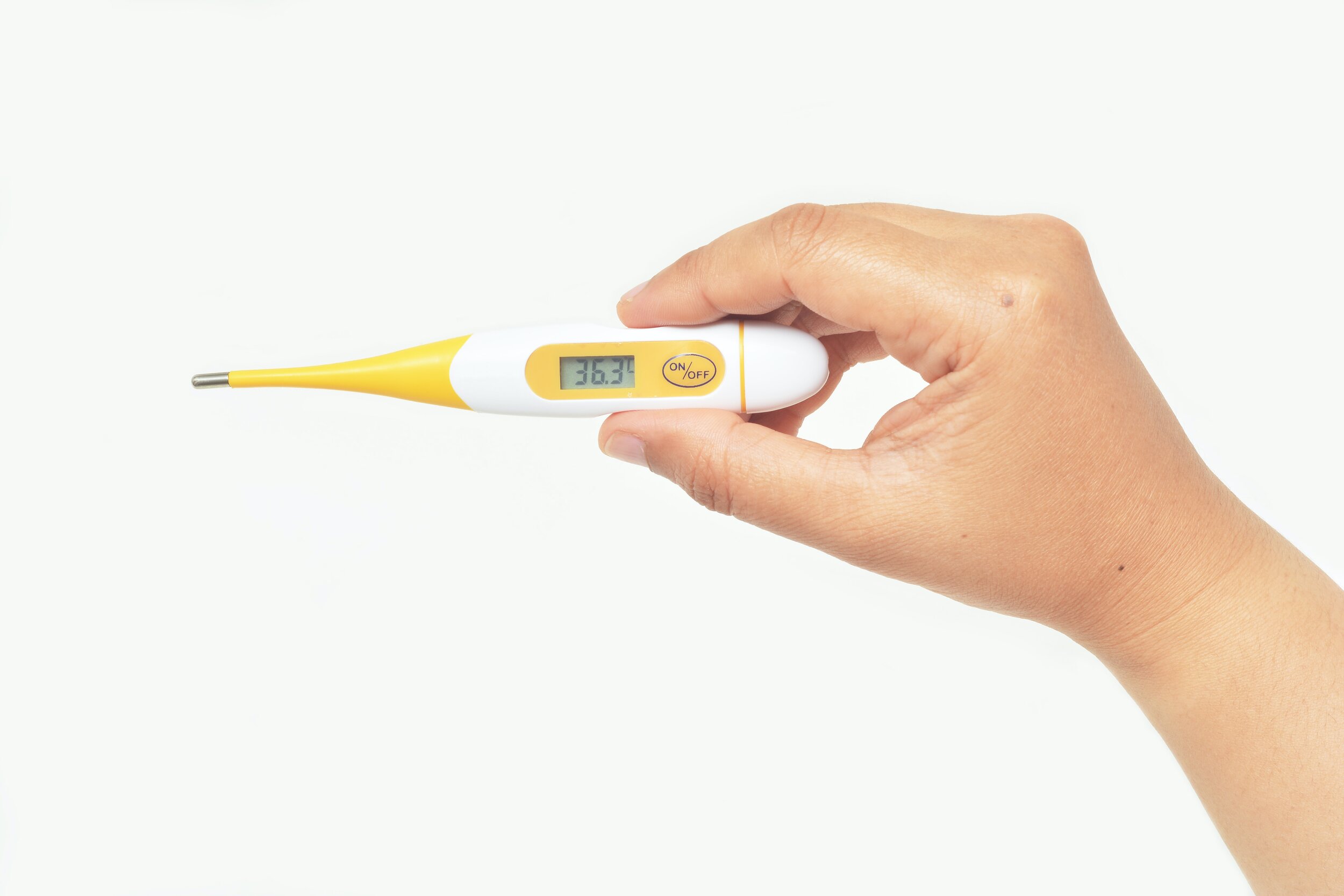The body’s temperature can tell you so much about your health, but often times we think of the negative aspects of what a change in temperature can mean. If you have a fever, it could be a sign of infection that your body is trying to fight. Plus, if you are a parent, you know a temperature in an infant could mean that teething is coming (aka crying and trouble sleeping)! However, what about taking your temperature for your wellness?
One of the key ways to track your menstrual cycle is to take your Basal Body Temperature (BBT). Your BBT is your lowest temperature when you are at rest and slight shifts can tell you not only things about your fertility, but also your overall health.
Stress, medications, changes in sleep patterns, presence of an illness, and ovulation, are all known ways to change your overall BBT.
Tracking BBT for Fertility Awareness
After ovulation, your body releases progesterone to prepare the lining of the uterus for pregnancy. Progesterone has a thermogenic effect on the body which causes your BBT to increase about half a degree once that hormone is released. So, by monitoring these daily BBTs, you will see a rise in your temperature after you ovulate.
Once you ovulate, you should see a clear and obvious temperature shift where three temperatures are higher than the previous six. In fact, you should be able to draw a line through your chart so that below that line represent your pre-ovulatory temperatures, and above the line represent your post-ovulatory temperatures. And then if you see about 2-3 weeks of higher temperatures, you might want to consider buying a pregnancy test as your progesterone did not drop (meaning it is staying high to continue to support a pregnancy)!
So yes, this is not a predictive form of ovulation to help you plan your fertility window (like your LH surge), but it is helpful to confirm that ovulation occurred. Once ovulation is confirmed, you can eliminate the need for timed intercourse, it can help you determine how your luteal phase support you may need, and to better understand your menstrual cycle.
Optimal Way To Monitor Your BBT
5 hours of Uninterrupted Sleep: For some, this is pretty easy! Others of us, less so. But getting less than optimal sleep isn’t going to mean that you can never track your BBT, it just means you should note that on your chart so if something seems a bit out of character when you look back at it, you can understand why.
Minimal Movement: You ideally want to take your temperature before you move around a lot as movement makes your BBT rise. Again, this can be challenging for some, easier for others. I recommend keeping your thermometer right next to your bed so you can reach over easily without moving your body too much.
Warm Up The Thermometer: Studies show that warming up the thermometer is important as your readings may be lower that what is actually happening. If you sit with the thermometer in you mouth for 10 minutes, and then press the button, that is generally enough time.
Record ASAP: I like to record my temperature immediately because a difference of .1 and .6 can mean a lot, and I have enough going on in my head where it can be hard to remember those numbers.
At Least One Decimal: All thermometers go to at least one already, and most go to two. The second one is less necessary, just make sure you round appropriately.
Take Temperature in Mouth: Temperatures readings are most effective and easiest in your mouth, but you can also consider vaginally if that works for you.
If you aren’t able to do those above steps, that is okay as no chart is perfect. Just make notes about what potential issues may be present, so you can begin to interrupt those changes. However, if you are noticing that you are not getting great temperature readings, I recommend going back to step one and making sure you are more closely following the proper protocol rather than worry your body isn’t working properly because your temperatures aren’t “right”.
Normal BBTs
An important aspect of measuring your BBT is to remember that this is your personal BBT, so it can be hard to compare to others. Furthermore, your post-ovulatory temperature depends on your pre-ovulatory temperature. So your temperatures compared to someone else’s might look different, but both are in the range of normal for each individual person. Generally, we like to see pre-ovulatory temperatures around 96.8 to 97.5 and post ovulatory temperatures 97.6 to 98.6, but again, that is just a range and each individual person will have a different normal.
External Factors That Impact BBT
Like with most aspects of your health and wellness, there are external factors that may impact your BBT. Some of these include:
Stress
An illness, and especially if you have a fever
Shift work
Bad nights sleep
Drinking alcohol the day prior
Traveling, specifically when you have a time change
Waking up different time (but sleep trumps anything else, so get the sleep you need!)
Food allergies and seasonal allergies
Food issues and sensitivities
Various medications, include oral or injections (at any point in your cycle, not just immediately prior to taking BBT)
Taking your temperature after you get out of bed or move around a lot
Eating or drinking prior to taking temperature
Shifting how you take temperature
Problems Taking BBT
While your temperature can tell you a lot about the timing of your ovulation, you also have a chance to see immediate results which can give you a glimpse into a window of your overall health.
Before you rush to your doctor because you have some crazy low or high temperature, make sure you are taking your temperature in the optimal way. This includes:
You slept for at least 5 hours
You took your temperature before you moved too much
You warmed up the thermometer
You analyzed any external factors from the day prior that may have impacted your temperature
If you have done all of those things, bringing up to your provider may be a good next step.
Lower than normal temperatures: Possible thyroid disfunction
Higher than normal temperatures: Depends, could be a good thing (pregnancy) or it could mean your normal is high, so in fact you are not seeing a good rise. Definitely talking to your doctor as well as checking your temping techniques would be helpful.
Minimal rise around ovulation or rise and fall of temperatures throughout cycle: Possible anovulatory cycle or low progesterone
We hope this helped you learn about your BBT and to use this at-home and non-invasive way to track your fertility, menstrual cycle, and overall wellness!
Our Fertility Doula Support is now available in-person in North Carolina and virtually across the states!
Resources:
Hendrickson-Jack, Lisa. The Fifth Vital Sign: Master Your Cycles and Optimize Your Fertility. Fertility Friday Publishing Inc., 2019.










